Category: Ricerca
Eight surveys for WEAVE. The paper: “The wide-field, multiplexed, spectroscopic facility WEAVE: Survey design, overview, and simulated implementation” of S. Jin (University of Oxford) appeared on MNRAS

About thirteen years ago, in January 2010, the meeting “Science with the William Herschel Telescope 2010-2020” took place at the Isaac Newton Group of telescopes (ING). During that meeting, the importance of spectroscopic surveys at medium and high resolution for various strategic fields in both galactic and extragalactic astronomy was discussed. In the same year, a document endorsed by the
» Read moreA catalog of Lithium abundances from the Gaia-ESO Survey. The study: “The Gaia-ESO Survey: Lithium measurements and new curves of growth” of E.Franciosini (INAF-OA Arcetri) recently appeared on A&A
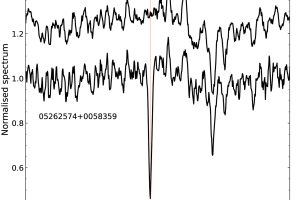
In astrophysics, there are elements that provide important diagnostics used in various fields, such as Lithium. For instance, measurements of Lithium abundances are important in cosmology where there is a well-known problem of matching the measured abundances in population II stars with those predicted by cosmological models of Big Bang synthesis. Measurements of Lithium abundances are also essential for understanding
» Read moreA superflare observed in the M star AD Leo. The study: “The Great Flare of 2021 November 19 on AD Leo. Simultaneous XMM-Newton and TESS observations” of B. Stelzer (Eberhard-Karls-Universität Tübingen) appeared on A&A
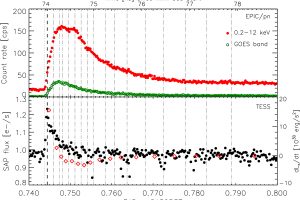
Flares are transient and energetic phenomena that occur in most stars and can be observed with high spatial and temporal resolution in the Sun. These phenomena are triggered by a sudden release of energy previously stored in the star’s magnetic field, which, after a sequence of events, leads to extreme heating of the stellar plasma. The heated plasma then rapidly
» Read moreChemistry and rotation of the B stars in the stellar cluster NGC3293. The study: “The Gaia-ESO survey: A spectroscopic study of the young open cluster NGC 3293” of T. Morel (Université de Liège) appeared on A&A
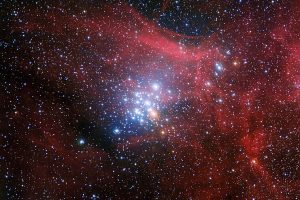
Spectroscopic observations of massive stars (i.e., those more massive than 8 solar masses) allow astronomers to study their rapid evolution, which occurs on much shorter timescales compared to solar mass stars, and the impact of parameters such as stellar rotation on their evolution. To achieve this, observations of stellar clusters are greatly valuable, as they are groups of stars formed
» Read moreFive molecular species found in the atmosphere of WASP-69b. The study: “The GAPS Programme at TNG. XXXVIII. Five molecules in the atmosphere of the warm giant planet WASP-69b detected at high spectral resolution” of G. Guilluy (INAF-OATo) recently appeared on A&A
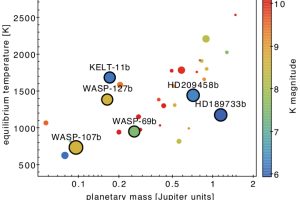
In recent years, advances in instrumentation, knowledge, and observational strategies in the field of exoplanets have allowed for the identification and confirmation of thousands of planets around other stars (exoplanets). Moreover, for the past few years, astronomers have been capable of studying the chemistry and physical properties of the atmospheres of some of these exotic worlds. These studies can also
» Read moreγ-ray emission from the supernova remnants in the Large Magellanic Cloud. The paper: “High-energy γ-ray detection of supernova remnants in the Large Magellanic Cloud” of R. Campana (INAF – OAS) recently appeared on MNRAS
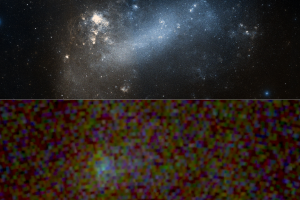
Supernova remnants are expanding nebulae produced by the explosion of high-mass stars. They are of great interest for understanding various physical processes and the final evolutionary stages of massive stars. Observations of supernova remnants in gamma rays are particularly important as they shed light on high-energy processes, such as the acceleration of cosmic rays (charged particles at very high energies).
» Read moreTOI-1807b, the youngest Ultra-Short Period exoplanet discovered so far. “The GAPS Programme at TNG XXXVII. A precise density measurement of the young ultra-short period planet TOI-1807 b” of D. Nardiello (INAF -OAPd) appeared on A&A

Among the 5322 exoplanets discovered so far (from NASA), approximately 100 planets belong to the class of Ultra-Short Period (USP) exoplanets. These planets have very close orbits around their stars, with a period shorter than one day on Earth. They typically have a radius smaller than 2 Earth radii and are likely to be rocky cores of gaseous planets that lost their
» Read moreMorphology, dynamics, and star formation in the Cone Nebula. The study: “Spatial and dynamical structure of the NGC 2264 star-forming region” of E. Flaccomio (INAF – OAPA) recently appeared on A&A
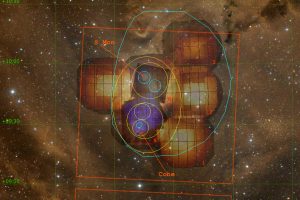
Several questions about the star formation process are still debated. For instance, we know that stars form from the gravitational contraction of clouds of gas and dust, called “molecular clouds,” since they are mainly made of molecular hydrogen. Mainly thanks to observations from the Herschel satellite, we also know that most star formation occurs in long filaments embedded in these
» Read moreTwo recent papers by R. Bonito and L. Prisinzano (INAF-OAPA) describe the optimization of Rubin LSST observing strategy for the study of variability in young stars and a deep survey of the Galactic plane

The Vera C. Rubin is currently under construction in Cerro Pachón, northern Chile. Equipped with an 8.4-meter primary mirror, the telescope is designed to monitor the entire visible sky for ten years with six filters that cover the entire optical band, along with part of the UV band (the u filter) and the IR band (the y filter). This survey, known
» Read more
